 CHAMPAIGN, Ill. - Scientists say they know far too little about Midwestern seismic zones like the one that rumbled to life under southern Illinois Friday morning, but some of what they do know is unnerving.The fault zones beneath the Mississippi River Valley have produced some of the largest modern U.S. quakes east of the Rockies, a region covered with old buildings not built to withstand seismic activity.And, when quakes happen, they're felt far and wide, their vibrations propagated over hundreds of miles of bedrock.Friday's quake shook things up from Nebraska to Atlanta, rattling nerves but doing little damage and seriously hurting no one. It was a magnitude 5.2 temblor centered just outside West Salem in southeastern Illinois, a largely rural region of small towns that sit over the Wabash fault zone. The area has produced moderately strong quakes as recently as 2002.But it hasn't been studied to nearly the degree of quake-prone areas west of the Rockies, particularly along the heavily scrutinized Pacific coast."We don't have as many opportunities as in California," said Genda Chen, associate professor of engineering at the University of Missouri-Rolla, which sits near the well-known and very active New Madrid fault zone."We cannot even borrow on the knowledge they learn on the West Coast" because quakes that happen in California-where tectonic plates beneath the Earth's surface collide-are so different from Midwestern quakes that happen far away from the edges of the nearest plates.It isn't entirely clear, for instance, whether the Wabash faults are related to the New Madrid faults or not.Some scientists say they are related, noting that the Wabash faults, which roughly parallel the river of the same name in southern Illinois and Indiana, are a northern extension of the New Madrid zone. Others say they're not.The New Madrid fault zone produced a series of quakes in 1811 and 1812 that reached an estimated magnitude 7.0, putting them among the strongest known quakes to have occurred east of the Rockies. The quakes changed the course of the Mississippi River and were felt in New England.That distance of well over a thousand miles sounds impressive, but experts say quakes that happen in the Midwest commonly radiate out for hundreds of miles because of the bedrock beneath much of the eastern United States."Our bedrock here is old, really rigid and sends those waves a long way," said Bob Bauer, a geologist with the Illinois State Geological Survey who works in Champaign.He compared the underground rock, which in much of the Midwest lies anywhere from a few thousand feet to just a few feet below the earth's surface, to a bell that very efficiently transmits seismic waves like sound."California is young bedrock," he explained. "It's broken up ... like a cracked bell. You ring that, the waves don't go as far."The question of whether Friday's quake was centered along a branch of the New Madrid zone or not is of more than academic interest. The area even now produces smaller, very regular quakes, and experts say it still has the potential to produce a quake that could devastate the region.The Wabash faults have the potential to do the same, at least based on distant history, said Columbia University seismologist Won-Young Kim.The strongest quake produced in recent history by the Wabash was a magnitude 5.3 in southern Illinois in 1968, but researchers have found evidence that 4,000 to 6,000 years ago, much stronger quakes shook the region, Kim said, as strong as magnitude 7.0 or more.A similar quake is still possible, if the region is given time to build up enough energy, Kim said. But knowledge about the area is too thin to say whether that's likely, he added.
CHAMPAIGN, Ill. - Scientists say they know far too little about Midwestern seismic zones like the one that rumbled to life under southern Illinois Friday morning, but some of what they do know is unnerving.The fault zones beneath the Mississippi River Valley have produced some of the largest modern U.S. quakes east of the Rockies, a region covered with old buildings not built to withstand seismic activity.And, when quakes happen, they're felt far and wide, their vibrations propagated over hundreds of miles of bedrock.Friday's quake shook things up from Nebraska to Atlanta, rattling nerves but doing little damage and seriously hurting no one. It was a magnitude 5.2 temblor centered just outside West Salem in southeastern Illinois, a largely rural region of small towns that sit over the Wabash fault zone. The area has produced moderately strong quakes as recently as 2002.But it hasn't been studied to nearly the degree of quake-prone areas west of the Rockies, particularly along the heavily scrutinized Pacific coast."We don't have as many opportunities as in California," said Genda Chen, associate professor of engineering at the University of Missouri-Rolla, which sits near the well-known and very active New Madrid fault zone."We cannot even borrow on the knowledge they learn on the West Coast" because quakes that happen in California-where tectonic plates beneath the Earth's surface collide-are so different from Midwestern quakes that happen far away from the edges of the nearest plates.It isn't entirely clear, for instance, whether the Wabash faults are related to the New Madrid faults or not.Some scientists say they are related, noting that the Wabash faults, which roughly parallel the river of the same name in southern Illinois and Indiana, are a northern extension of the New Madrid zone. Others say they're not.The New Madrid fault zone produced a series of quakes in 1811 and 1812 that reached an estimated magnitude 7.0, putting them among the strongest known quakes to have occurred east of the Rockies. The quakes changed the course of the Mississippi River and were felt in New England.That distance of well over a thousand miles sounds impressive, but experts say quakes that happen in the Midwest commonly radiate out for hundreds of miles because of the bedrock beneath much of the eastern United States."Our bedrock here is old, really rigid and sends those waves a long way," said Bob Bauer, a geologist with the Illinois State Geological Survey who works in Champaign.He compared the underground rock, which in much of the Midwest lies anywhere from a few thousand feet to just a few feet below the earth's surface, to a bell that very efficiently transmits seismic waves like sound."California is young bedrock," he explained. "It's broken up ... like a cracked bell. You ring that, the waves don't go as far."The question of whether Friday's quake was centered along a branch of the New Madrid zone or not is of more than academic interest. The area even now produces smaller, very regular quakes, and experts say it still has the potential to produce a quake that could devastate the region.The Wabash faults have the potential to do the same, at least based on distant history, said Columbia University seismologist Won-Young Kim.The strongest quake produced in recent history by the Wabash was a magnitude 5.3 in southern Illinois in 1968, but researchers have found evidence that 4,000 to 6,000 years ago, much stronger quakes shook the region, Kim said, as strong as magnitude 7.0 or more.A similar quake is still possible, if the region is given time to build up enough energy, Kim said. But knowledge about the area is too thin to say whether that's likely, he added.http://news.yahoo.com/s/ap/20080419/ap_on_re_us/midwest_earthquake;_ylt=AkzK_FCD11I9qzmn6ugbymRI2ocA
As in the days of Noah....

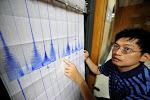
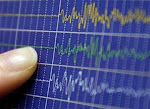
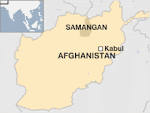






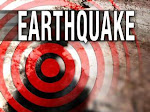
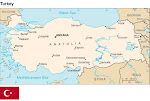
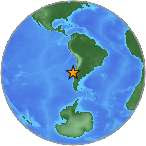




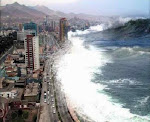

.jpg)


.bmp)
No comments:
Post a Comment